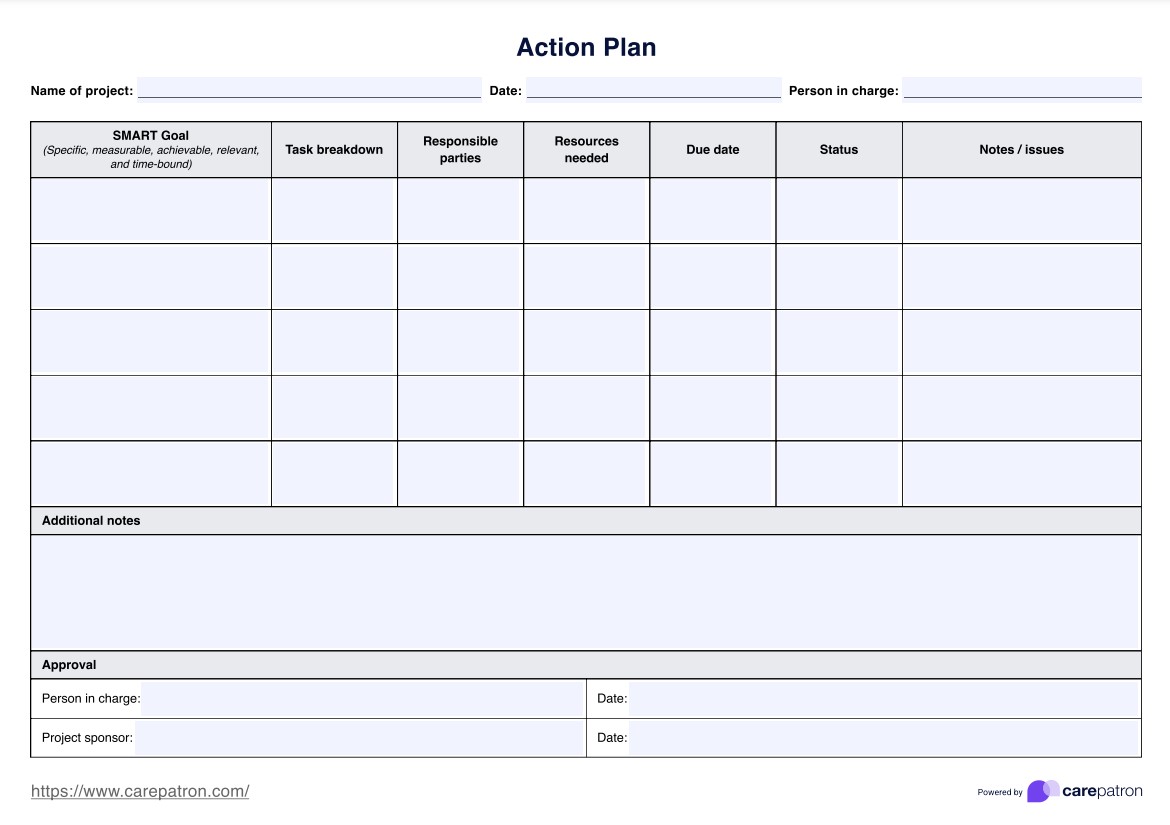An action plan template begins by identifying a specific, realistic goal before breaking it down into tasks, responsibilities, due dates, and resources required to reach it.

Action Plan
Improve your healthcare project management skills with our Action Plan Template. Download your free PDF here.
Action Plan Template
Commonly asked questions
These plans are used when individuals or teams require a proactive task management or goal-setting approach. This may include fulfilling individual or community aspirations, developing crisis management plans, or monitoring progress in a health journey.
The template breaks down the tasks, resources, responsibilities, and timelines required to reach a goal or aspiration successfully. This involves setting realistic expectations, defining success, and developing a timeframe to track progress.
EHR and practice management software
Get started for free
*No credit card required
Free
$0/usd
Unlimited clients
Telehealth
1GB of storage
Client portal text
Automated billing and online payments











